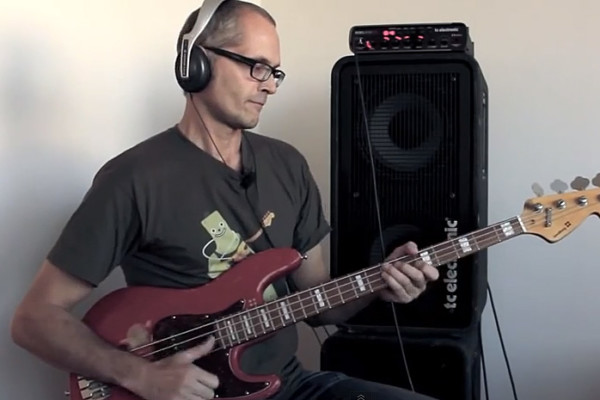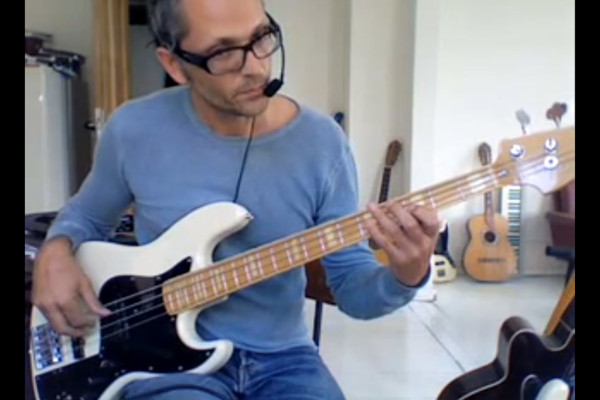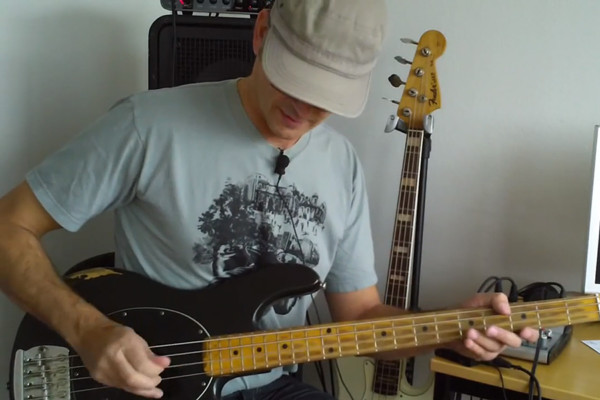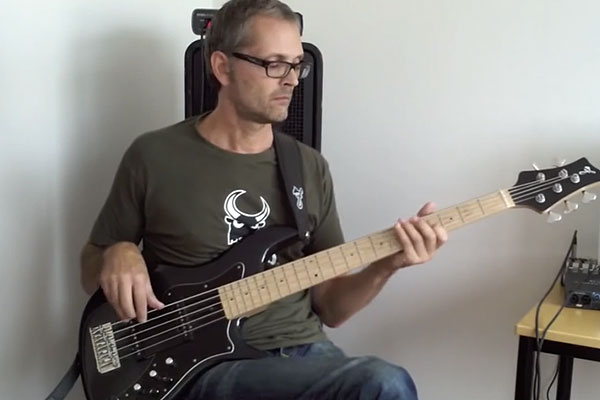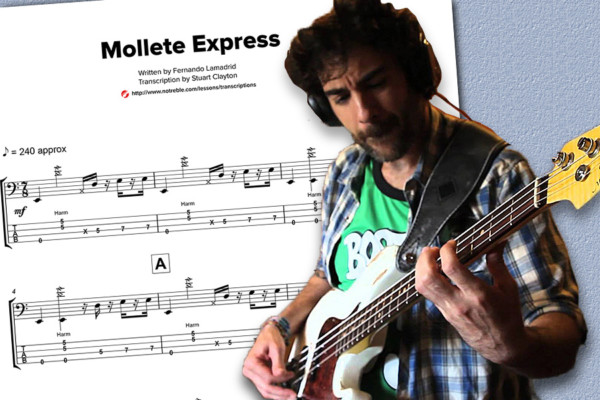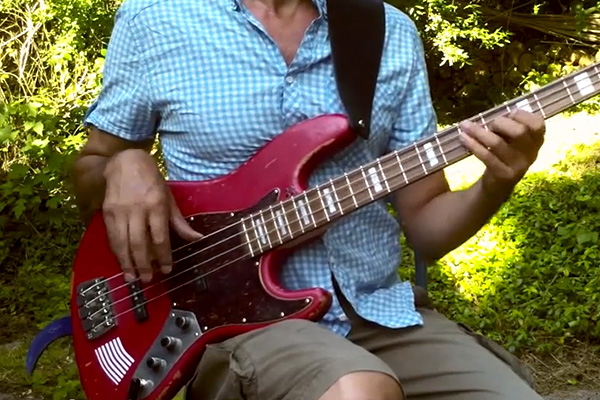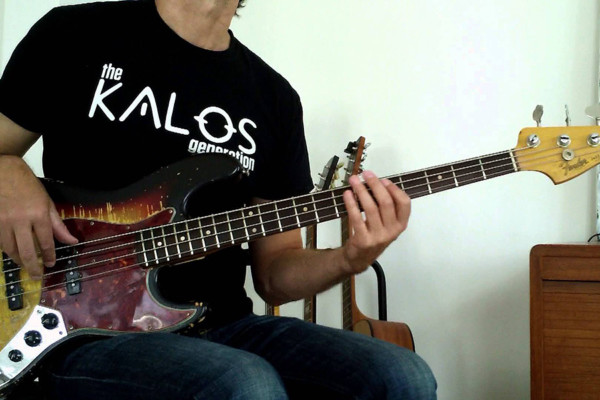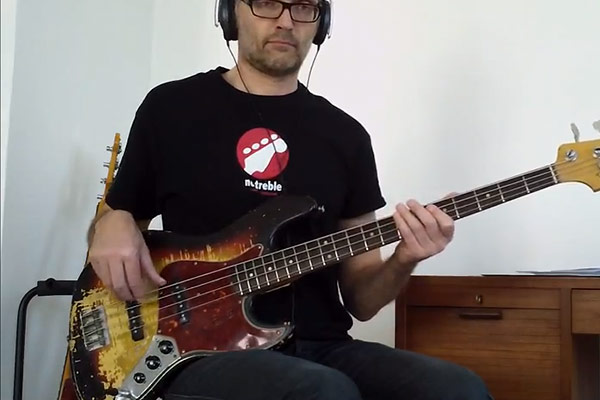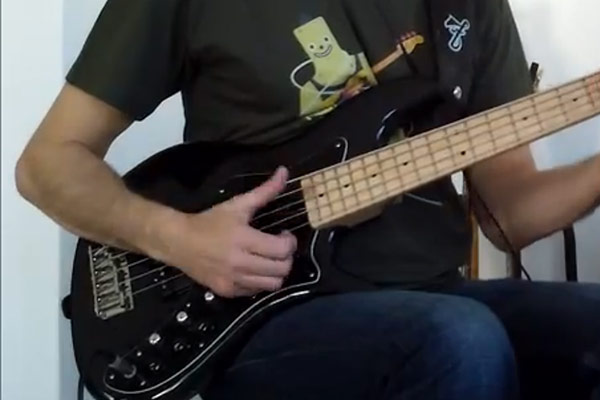Bass Lessons - Page 31
Lesson: Funky Slap Bass with Open Strings
Here’s a simple slap pattern based on open strings and octaves. As I demonstrate in the video, I’m playing a pattern, first in A, and then switching to E (same line). Before switching back to the A, there’s an octave line to bring us back. The line uses hammer-ons and pull-offs. Around the 3 minute mark of the video, I...
Walking Bass Lesson: 12 Bar Blues
When you’re presented with a 12-bar blues, you have different options for how to create a walking bass line. In this lesson, we’ll cover those options. The song example I’m using is “Gotta Mind to Travel” by Coco Montoya, if you want to check that out.
Reviving Old Bass Strings: A New Approach
I let one of my friends borrow my 1978 pre-Ernie Ball Music Man bass, and he really gunked up the strings. You’ll hear in the video below that the strings are pretty dead. There are all kinds of tricks out there being shared for reviving old strings: boiling, alcohol, whatever. This doesn’t require any of that, and you don’t even...
Lesson: How to Groove on Bass
One of the important aspects of playing bass is your ability to groove. In this new lesson, I’ll offer up some beginner-level concepts to help you start down the path. We’ll explore keeping time and using percussive an ghost notes to make the lines come to life… the recipe for getting people out of their seats and dancing. Follow along...
Lesson: Funky and Relaxed Fingerstyle Bass Groove with Double Stops
Continuing our bass groove lesson series, here’s a cool (and relaxed) groove and exercise for you. In this groove, we’re employing double stops with one of the most common shapes: Major 10th, root note, and a Major 3rd (an octave above). Follow along with the video and this lesson transcription (PDF download). For the gear heads, I’m playing my Sandberg...
Bass Transcription: Fernando Lamadrid’s “Mollete Express”
Just as I was wondering which piece to select for this month’s transcription, along comes this killer track from super-talented bassist Fernando Lamadrid and drummer Rick Arencibia. This one has it all: harmonic-laden odd-time grooves, funky slap lines, chordal work and several jaw-dropping solos. Perfect! Download the transcription (PDF) and follow along: “Mollete Express” opens with a fingerstyle groove over...
Groovy Fingerstyle Bass Lick Lesson
Here’s a neat little fingerstyle groove lick lesson, complete with double stops and that open string trick we’ve been playing around with over a couple of the recent lessons. I can’t seem to stop using this technique when playing licks. Maybe it is becoming my signature thing! Follow along with the video and the transcription (PDF). We’re in the key...
Lesson: Soul/Funk Fingerstyle Bass Groove
In this lesson, we’ll explore some fingerstyle soul/funk with a nice groove in A. As with the previous lesson, I’m making use of open strings to achieve some fast note doubling (this time, A and D). Follow along with the video and this transcription (PDF). For the gear heads: I’m playing a Sandberg California TT MarloweDK Signature bass through a...
Lesson: Funky Groove with Pentatonic Run
Keeping up with this recent series of quick bass lick lessons, here’s a short groove in Em. I’m playing this with an open D string to achieve a note doubling effect. Follow along with the video and this transcription (PDF). For the gear heads: I’m playing a 1964 Fender Jazz bass with Dunlop nickel strings, gauge 45-105 running through a...
Bass Lick Series: Disco Bass Groove in Gm
Here’s another quick lesson for you, this time focusing on a disco-style bass groove. As with any excercise, it is important to keep playing it without stopping until you find that groove. Follow along with the video and this transcription (PDF). The tempo on this one is 105 bpm. For the gear heads: I’m playing a 1966 Fender Precision bass...
Lesson: Funky Finger Funk with Pentatonic Fill
Time to get funky. Here’s another quick bass lick lesson for you, centered around a pentatonic fill. Follow along with the video and this transcription (PDF download). If you want some background, there are a few lessons here covering pentatonic scales and patterns: Breaking Down the Pentatonic Scale: The Five Positions on Bass Improvising and Groove: Substituting Pentatonic Scales on...
Lesson: Offbeat Double Thumb Slap Bass
I’m working on a new concept in double thumb slap bass, which basically is an “in reverse” technique. This means the “down” thumb is on the offbeat, and the “up” thumb is on the downbeat. This creates a whole new feeling worth exploring. You can follow along with the notation (PDF) and the video below. Let me know how it...
